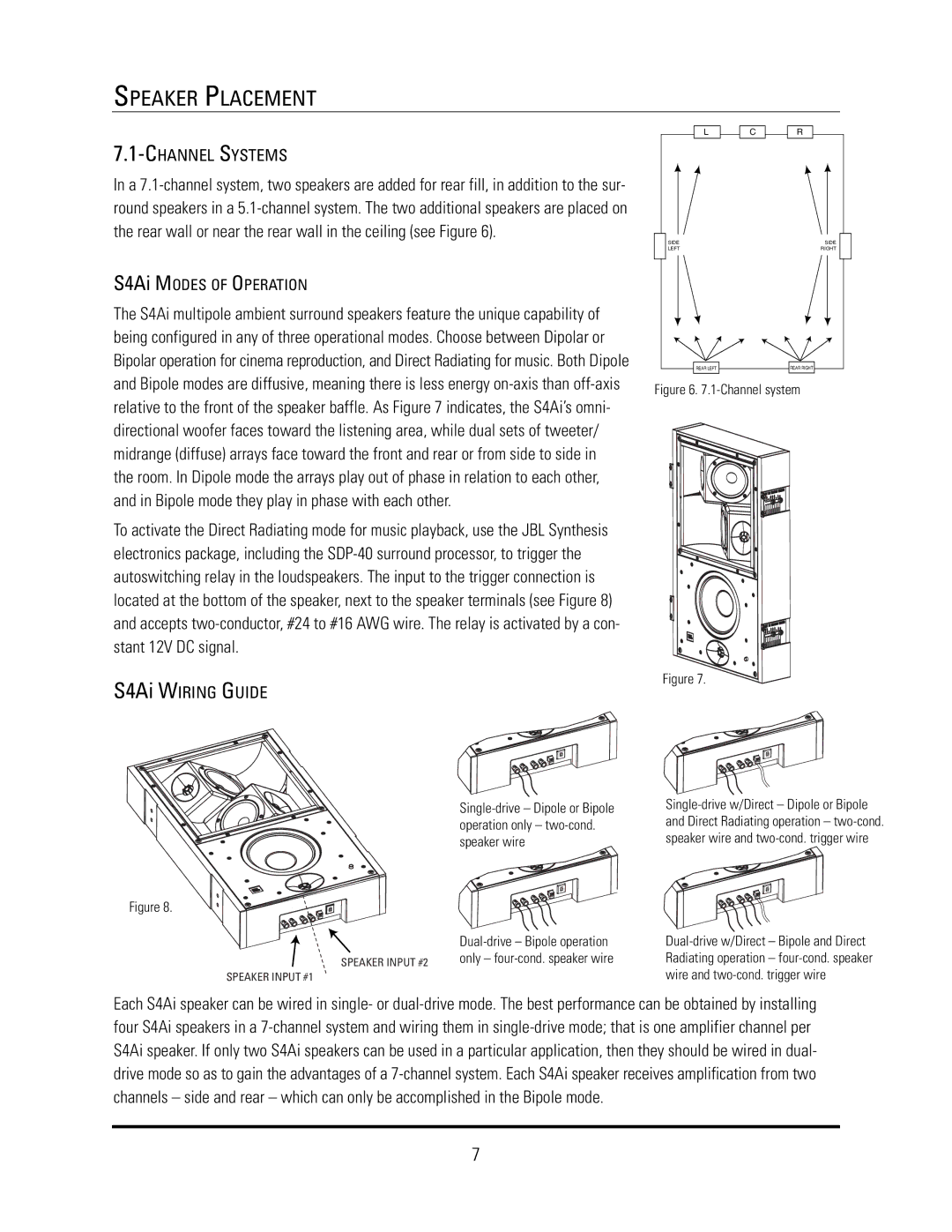7.1-CHANNEL SYSTEMS
In a 7.1-channel system, two speakers are added for rear fill, in addition to the sur- round speakers in a 5.1-channel system. The two additional speakers are placed on the rear wall or near the rear wall in the ceiling (see Figure 6).
S4Ai MODES OF OPERATION
The S4Ai multipole ambient surround speakers feature the unique capability of being configured in any of three operational modes. Choose between Dipolar or Bipolar operation for cinema reproduction, and Direct Radiating for music. Both Dipole and Bipole modes are diffusive, meaning there is less energy on-axis than off-axis relative to the front of the speaker baffle. As Figure 7 indicates, the S4Ai’s omni- directional woofer faces toward the listening area, while dual sets of tweeter/ midrange (diffuse) arrays face toward the front and rear or from side to side in the room. In Dipole mode the arrays play out of phase in relation to each other, and in Bipole mode they play in phase with each other.
To activate the Direct Radiating mode for music playback, use the JBL Synthesis electronics package, including the SDP-40 surround processor, to trigger the autoswitching relay in the loudspeakers. The input to the trigger connection is located at the bottom of the speaker, next to the speaker terminals (see Figure 8) and accepts two-conductor, #24 to #16 AWG wire. The relay is activated by a con- stant 12V DC signal.
S4Ai WIRING GUIDE
Single-drive – Dipole or Bipole operation only – two-cond. speaker wire
Figure 8.
| Dual-drive – Bipole operation |
SPEAKER INPUT #2 | only – four-cond. speaker wire |
SPEAKER INPUT #1
L  C
C 
 R
R
 REAR LEFT
REAR LEFT 
 REAR RIGHT
REAR RIGHT 
Figure 6. 7.1-Channel system
Figure 7.
Single-drive w/Direct – Dipole or Bipole and Direct Radiating operation – two-cond. speaker wire and two-cond. trigger wire
Dual-drive w/Direct – Bipole and Direct Radiating operation – four-cond. speaker wire and two-cond. trigger wire

![]() C
C ![]()
![]() R
R![]() REAR LEFT
REAR LEFT ![]()
![]() REAR RIGHT
REAR RIGHT ![]()
